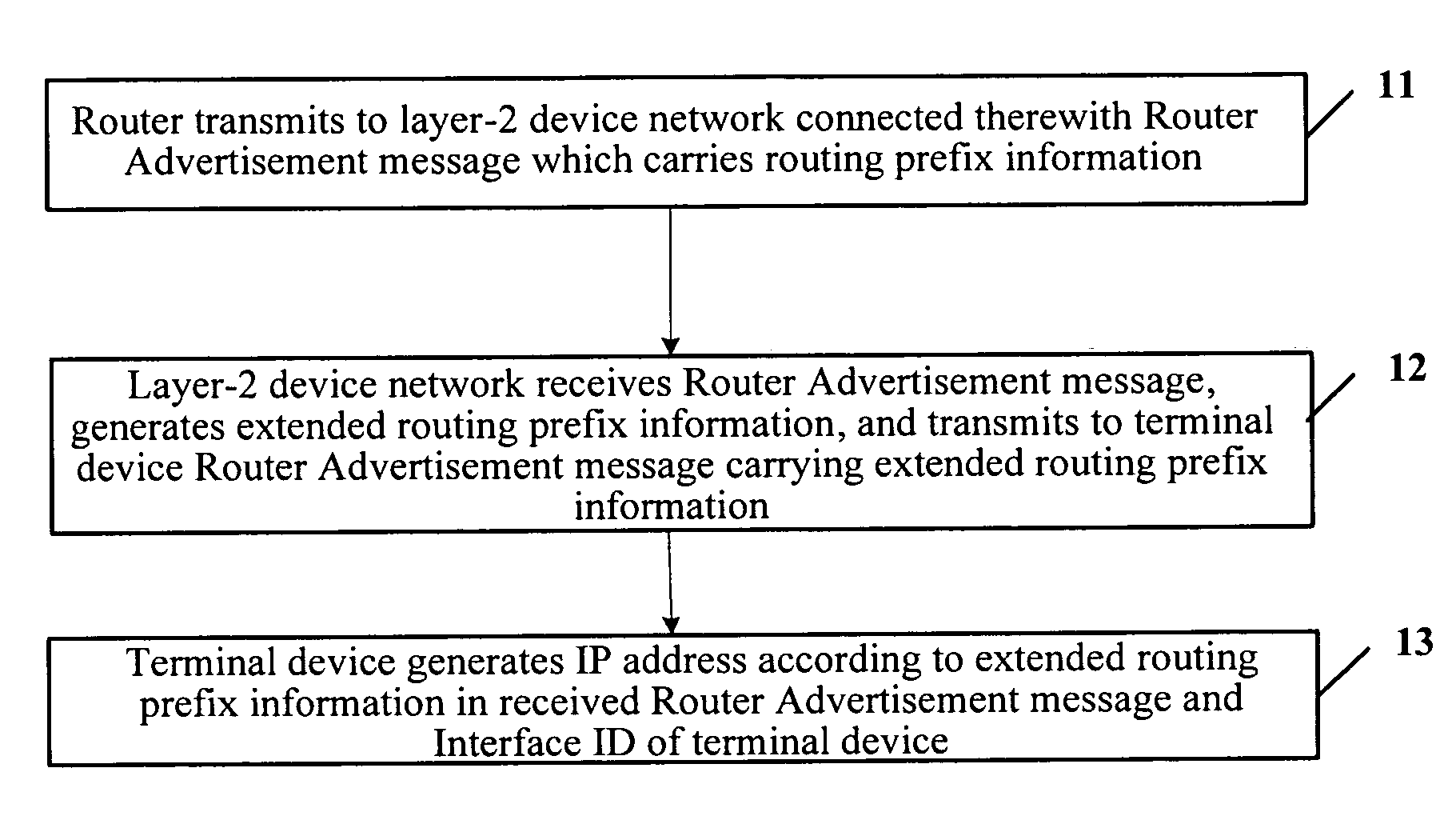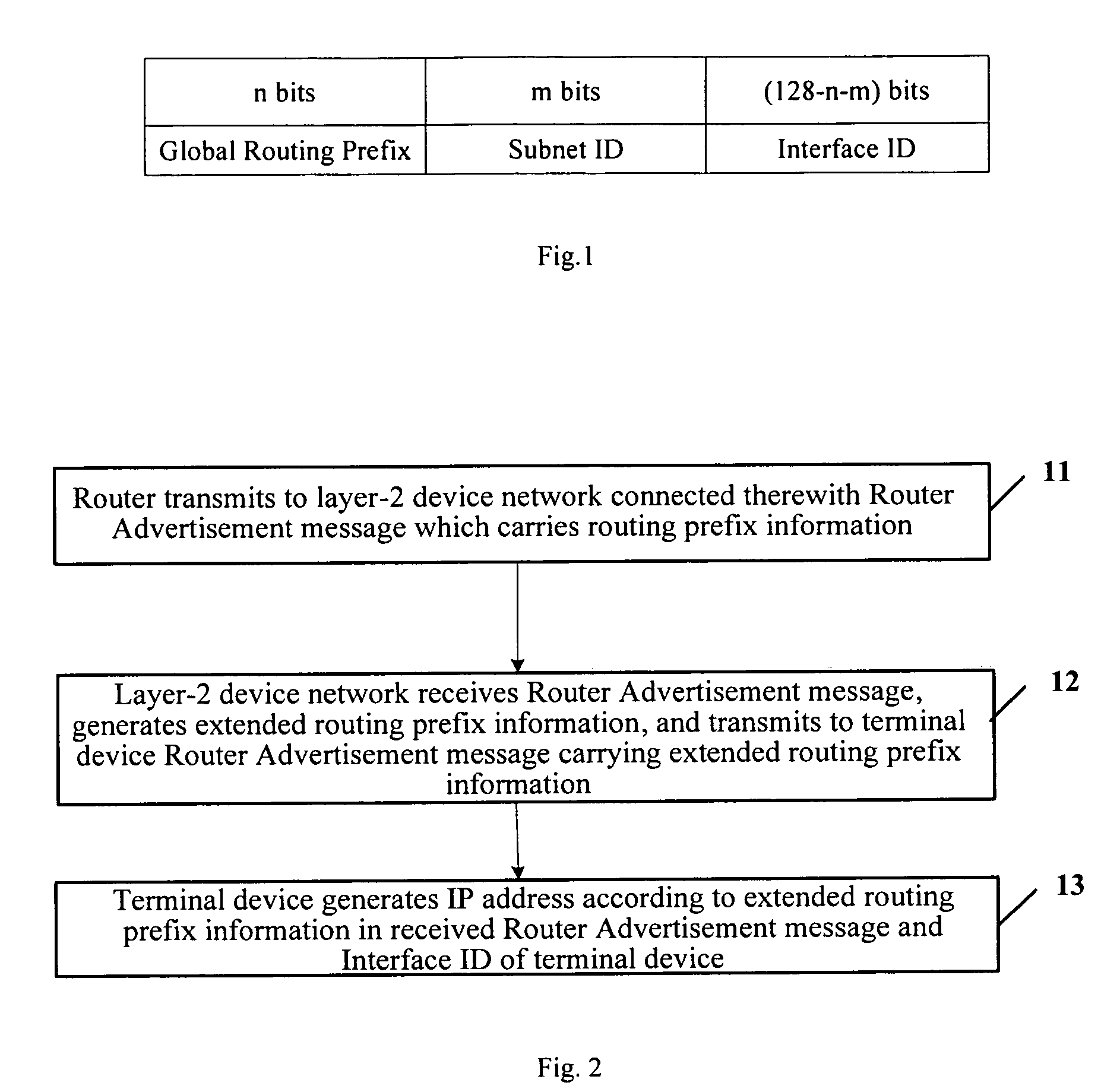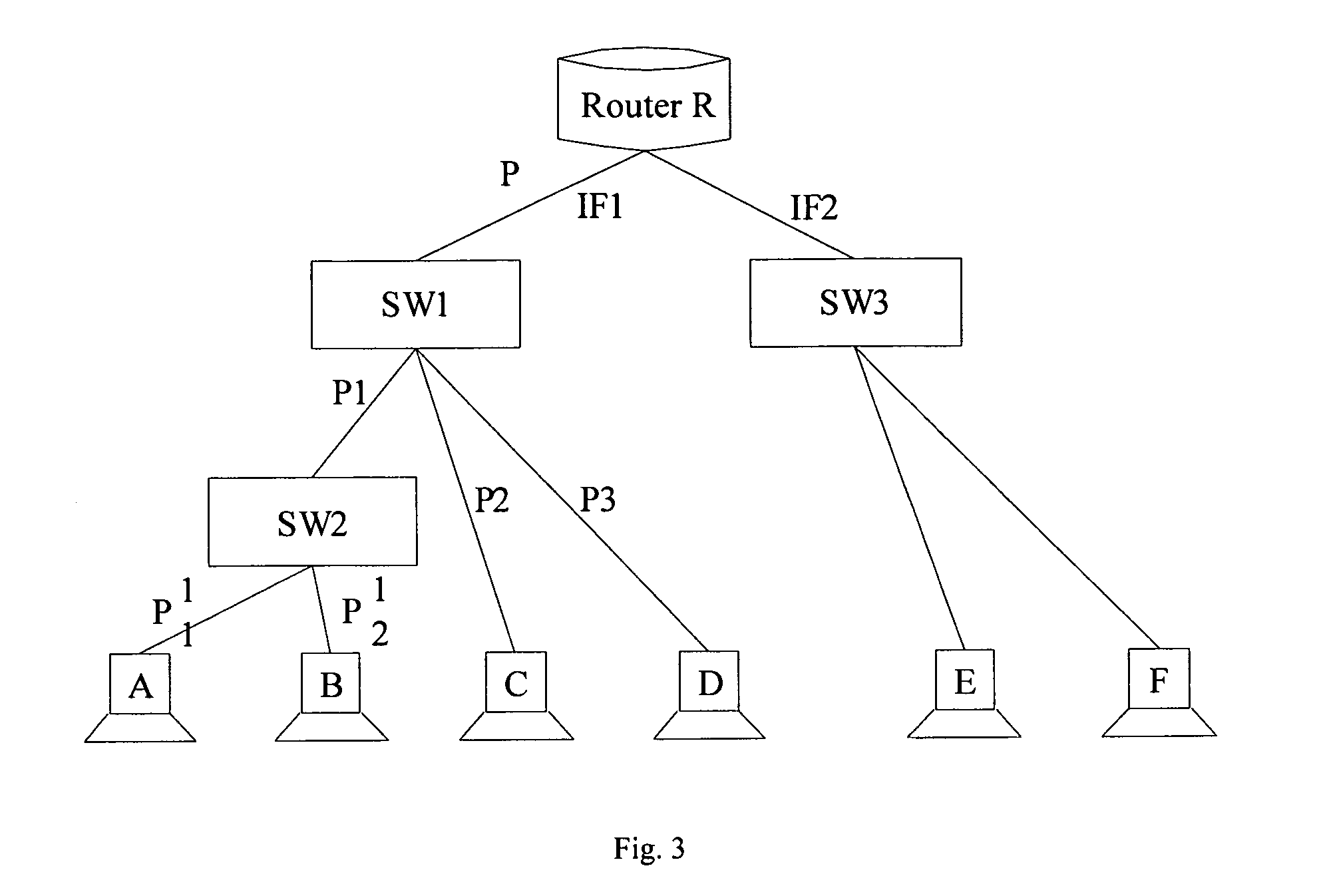Method for assigning IP address to terminal device and communication system
a terminal device and communication system technology, applied in the field of data communication, can solve the problems of stateless autoconfiguration of addresses, affecting network performance, etc., and achieve the effect of improving network performance and reducing traffi
- Summary
- Abstract
- Description
- Claims
- Application Information
AI Technical Summary
Benefits of technology
Problems solved by technology
Method used
Image
Examples
Embodiment Construction
[0026]Preferred embodiments of the present invention will be described in detail below with reference to the drawings.
[0027]Referring to FIG. 2, a method for assigning an IP address of at least one terminal device mainly includes the following steps.
[0028]In step 11, a router transmits to a layer-2 device network connected therewith a Router Advertisement message which carries routing prefix information.
[0029]In step 12, the layer-2 device network receives the Router Advertisement message, and according to the routing prefix information contained in the received Router Advertisement message, generates for each downlink port an extended routing prefix which can identify that port uniquely within the broadcast domain of the subnet where the layer-2 device network is located, and transmits via the port corresponding to the terminal device to the terminal device connected therewith a Router Advertisement message which carries the extended routing prefix information. Specifically, the la...
PUM
 Login to View More
Login to View More Abstract
Description
Claims
Application Information
 Login to View More
Login to View More - R&D
- Intellectual Property
- Life Sciences
- Materials
- Tech Scout
- Unparalleled Data Quality
- Higher Quality Content
- 60% Fewer Hallucinations
Browse by: Latest US Patents, China's latest patents, Technical Efficacy Thesaurus, Application Domain, Technology Topic, Popular Technical Reports.
© 2025 PatSnap. All rights reserved.Legal|Privacy policy|Modern Slavery Act Transparency Statement|Sitemap|About US| Contact US: help@patsnap.com



